Disclosure: This article contains affiliate links. We may earn a commission from purchases at no extra cost to you, which helps our travel content.
As the morning light spilled across Windhoek's Independence Avenue, casting long shadows between colonial German architecture and modern African buildings, I found myself instinctively framing shots in my mind—a habit from decades behind the camera that never quite leaves you. But this time, I wasn't in Namibia's capital to capture wildlife migrations or desert landscapes. Instead, I had come to document a different kind of Namibian story—one told through its food. After filming in the Namib Desert just weeks earlier, I extended my stay, drawn by rumors of a culinary scene that blends German colonial influences, indigenous traditions, and modern African innovation. What I discovered was a gastronomic narrative as rich and layered as the country's dramatic landscapes—a perfect medium shot of history, culture, and flavor that deserves its own feature presentation.
Market Scenes: Independence Avenue's Culinary Establishing Shot
My exploration began where any good documentary should—at street level, immersed in the daily rhythm of local life. Windhoek's markets offer what filmmakers call the perfect establishing shot: a wide-angle view of the city's culinary soul.
At the Tukondjeni Market in Katutura township, vendors greeted me with the same warmth I'd experienced throughout Namibia. Here, the food tells stories of pre-colonial traditions: mopane worms dried in the sun, marula fruits being transformed into oils and jams, and the unmistakable aroma of kapana—strips of beef grilled over open flames and served with a fiery relish called oshikundu.
'You must try with your hands, Madam Director,' laughed Maria, a vendor who quickly picked up on my filmmaker background when she spotted my camera bag slung across my shoulder. She demonstrated the proper technique—grabbing the meat with fingers, dipping it generously in spice, and enjoying it immediately while hot.
Later, at the more formal Post Street Mall, I wandered through craft stalls interspersed with food vendors selling biltong (dried, cured meat) in varieties I'd never imagined: oryx, springbok, kudu, and the familiar beef. The textures and intense flavors reminded me of filming in Madagascar years ago—where preservation techniques similarly transformed necessity into culinary art.
The markets of Windhoek operate as both community gathering spaces and living museums of culinary heritage. I found myself lingering for hours, my filmmaker's eye drawn to the hands of elderly women expertly grinding mahangu (pearl millet) into flour—their movements a choreography perfected over generations.
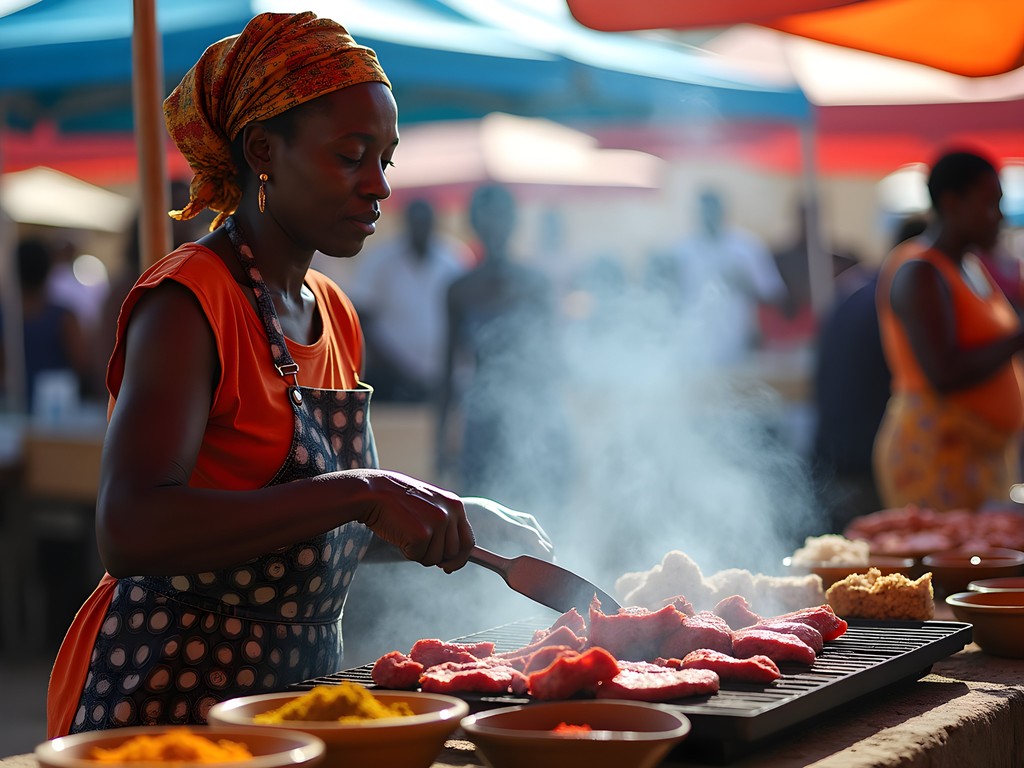
💡 Pro Tips
- Visit Tukondjeni Market early (before 10am) when produce is freshest and the heat is still manageable
- Bring small Namibian dollar notes for easier transactions with vendors
- Ask permission before photographing people at the markets—a smile and gesture toward your camera usually suffices
Colonial Crossfades: German Culinary Heritage in African Context
Namibia's German colonial history has created one of the most fascinating culinary crossfades I've ever documented. Nowhere is this more evident than in Windhoek's bakeries and beer gardens, where European traditions have adapted to African ingredients and sensibilities over generations.
At Monika's Bakery, a Windhoek institution since the 1960s, I watched master bakers create perfect pretzels and brötchen (bread rolls) that would make Munich proud. Yet alongside these were uniquely Namibian interpretations: rolls infused with indigenous herbs, game meat pastries, and desserts incorporating local fruits like the tart !nara melon.
'My grandmother was German, my grandfather Herero,' explained Anton, the third-generation owner, as he guided me through the back kitchens where massive stone ovens radiated heat. 'Our food is like our people—mixed heritage but distinctly Namibian now.'
This cultural blend extends to Windhoek's beer culture. At Joe's Beerhouse—an institution so beloved it appears in virtually every Windhoek guidebook—I found myself beneath an eclectic canopy of memorabilia, sipping a crisp Windhoek Lager while contemplating their famous game platter. The establishment feels like a film set designer's vision of colonial Africa meets modern beer garden, yet somehow avoids becoming a caricature.
The German-Namibian culinary story isn't without its complicated historical context, something I've learned to approach thoughtfully in my documentaries. Colonial legacies are complex narratives, but food often becomes the medium through which cultures reconcile, adapt, and create new identities. In Windhoek, this culinary evolution continues daily, frame by frame.
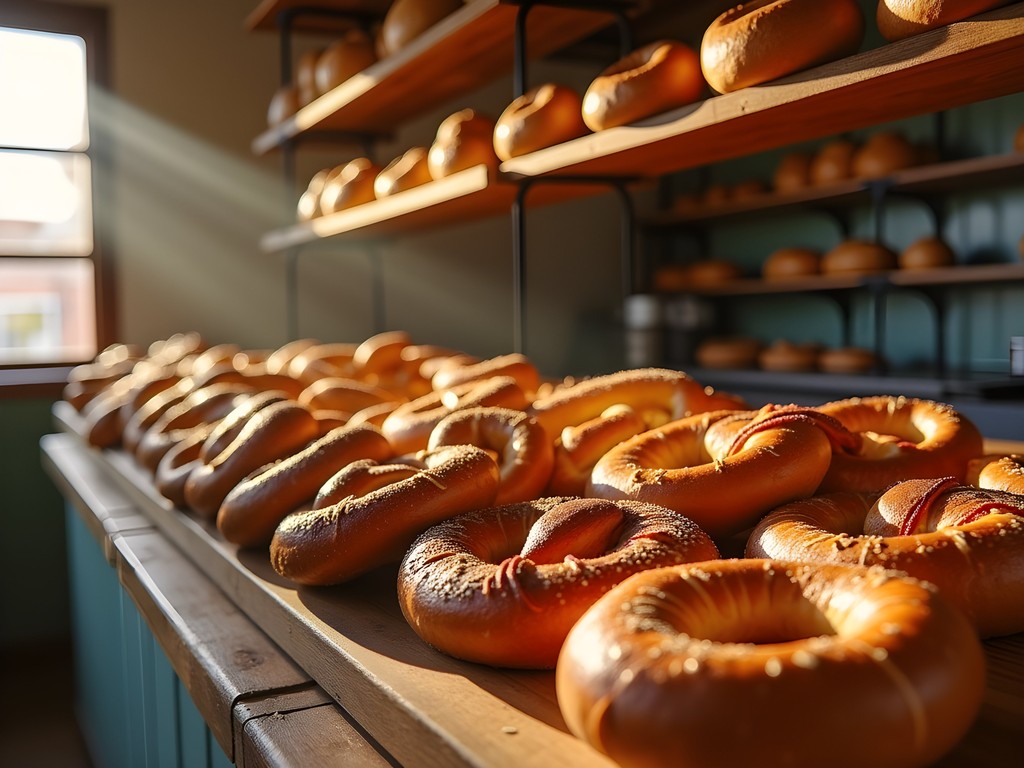
💡 Pro Tips
- Visit bakeries early morning (around 7am) for the freshest selection of breads and pastries
- Reserve a table at Joe's Beerhouse at least two days in advance—it's perpetually busy with both tourists and locals
- Try the mixed game platter to sample multiple meats in one meal—perfect for first-timers
Game Meats: The Leading Protagonists of Namibian Cuisine
In my decades filming wildlife across Africa, I've developed a profound respect for the continent's fauna. In Namibia, I discovered how sustainable game consumption has become both conservation tool and culinary art form—a complex narrative that challenges simplistic perspectives.
At The Stellenbosch Wine Bar & Bistro, housed in a restored colonial building with a courtyard that begs to be filmed in golden hour light, I met Chef Helena. Her tasting menu reads like a wildlife documentary species list: oryx carpaccio with indigenous herbs, kudu steaks with foraged mushrooms, and springbok loin with a mopane reduction.
'Every plate tells a conservation story,' Helena explained as she guided me through her kitchen. 'Game farming has saved these species from extinction while providing sustainable protein and supporting local economies.'
I was particularly moved by her preparation of oryx—an animal I'd spent weeks filming in the Namib Desert. The meat was prepared simply, allowing its natural flavors to shine, accompanied by vegetables grown in the restaurant's garden. I captured the plating process with my compact camera, which I always carry for food documentation.
At The Gathering, another standout restaurant located in Windhoek's trendy Klein Windhoek neighborhood, I experienced a more avant-garde approach to game. Here, Chef Marcus combines French techniques with indigenous ingredients in dishes like ostrich wellington and zebra tartare. The presentation was so cinematic I found myself instinctively planning camera movements as each dish arrived.
What makes Windhoek's game cuisine exceptional isn't merely the exotic protein—it's the thoughtful preparation, sustainable sourcing, and the way each chef frames these ingredients within both cultural heritage and modern culinary context. It's a master class in how to respectfully transform natural resources into gastronomic experiences.
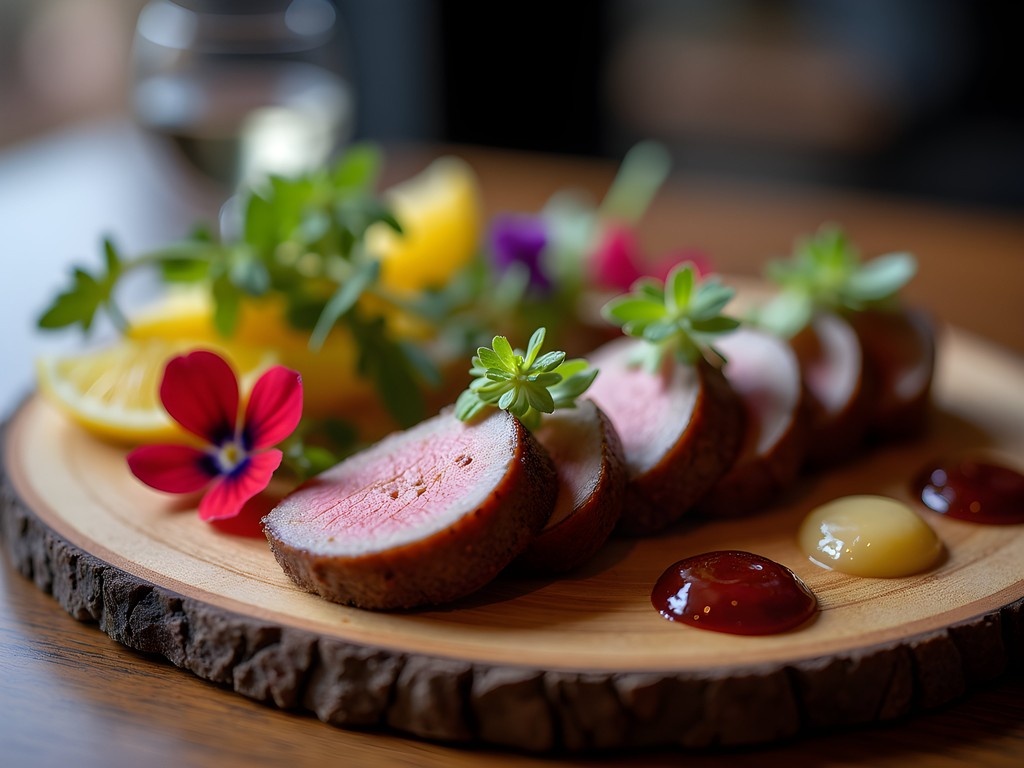
💡 Pro Tips
- Game meat is typically served rare to medium-rare—specify if you prefer it cooked differently
- Try oryx for your first game experience—it's lean but remarkably tender with a mild flavor
- Ask about the sourcing—restaurants proud of their sustainable practices will happily share details
Bush Cuisine: Indigenous Ingredients Take Center Frame
Beyond the colonial influences and game meats lies perhaps the most fascinating aspect of Windhoek's food scene—the revival and elevation of indigenous ingredients that have sustained Namibia's various ethnic groups for millennia.
At The Kukuri Restaurant in the National Museum of Namibia, I experienced what can only be described as a tasting tour through Namibia's diverse cultural landscapes. The restaurant specializes in pre-colonial cuisine, utilizing ingredients that many modern Namibians have forgotten.
'These plants and preparation methods tell our oldest stories,' explained Nangula, the head chef who has spent years researching traditional foods across Namibia's ethnic groups. 'Before borders, before colonization—this is the taste of our ancestors.'
I sampled dishes featuring mahangu porridge (pearl millet) topped with wild spinach, indigenous beans slow-cooked with marula oil, and a remarkable tea brewed from the resurrection bush—a plant that can seemingly return from death when water becomes available, much like Namibia's resilient culinary traditions.
At the more experimental restaurant NICE, young chef Tuli is creating modern interpretations of bush cuisine. Her tasting menu included a memorable amuse-bouche of !nara melon sorbet with crushed mongongo nuts, followed by a main course of mahangu gnocchi with indigenous mushrooms foraged after the rare rains.
To properly document these ephemeral dishes, I relied on my portable lighting to capture the intricate details and vibrant colors that would otherwise be lost in restaurant lighting.
What struck me most was how these ingredients—many adapted to extreme desert conditions—reflected the ingenuity of Namibia's indigenous peoples. Just as a documentary filmmaker searches for visual metaphors, these chefs were using food to tell stories of survival, adaptation, and the profound connection between landscape and culture.
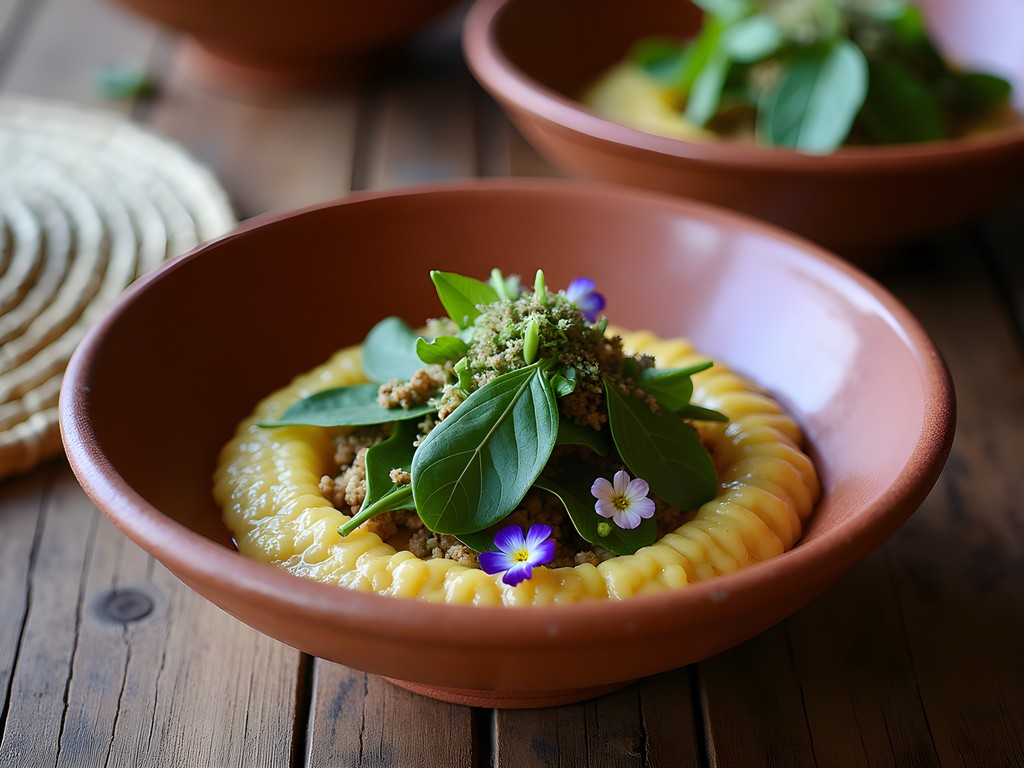
💡 Pro Tips
- Book The Kukuri Restaurant at least a week in advance as they prepare limited quantities of their specialized dishes
- Ask about seasonal bush ingredients—some are only available for short periods after rains
- Consider taking a bush food cooking class at the Namibian Institute of Culinary Education for hands-on experience
Sundowner Sequence: Windhoek's Drink Culture
In filmmaking, the golden hour before sunset offers magical lighting that cinematographers chase relentlessly. In Namibia, this time of day transforms into a cultural institution—the sundowner—when the day's heat finally breaks and social life begins anew.
Windhoek's drink culture reflects its multicultural identity, from German beer traditions to indigenous fermented beverages and South African wine influences. My exploration began at the Hilton Hotel's Skybar, where the panoramic views of Windhoek nestled between hills created the perfect establishing shot for understanding the city's layout.
Over a perfectly mixed Amarula Old Fashioned—featuring the cream liqueur made from the fruit of the marula tree—I chatted with bartender Johannes about Windhoek's evolving cocktail scene.
'We're creating a new Namibian identity through these glasses,' he explained, muddling indigenous herbs into a gin sourced from a small-batch distillery in Swakopmund. 'German precision, African ingredients, global techniques.'
For a more authentic experience, I visited ShebeeN in Katutura, where I sampled traditional omalodu (millet beer) served in distinctive containers called iitenga made from dried gourds. The fermentation process creates a tangy, slightly sour beer that connects modern drinkers to centuries-old traditions.
My most memorable drinking experience came at the Namibia Craft Centre's Craft Café, where I participated in a tasting of bush teas and foraged botanical infusions. The knowledgeable guide explained how many of these plants were traditionally used for medicinal purposes before becoming beverages.
I documented the vibrant colors and preparations with my travel tripod, which allows me to capture low-light scenes without flash—preserving the authentic ambiance of these drinking establishments.
From sophisticated cocktail bars to traditional shebeens, Windhoek's drink culture offers a fascinating lens through which to understand the city's past and present—each glass containing stories as complex as the country itself.

💡 Pro Tips
- Schedule your sundowner experience at least 30 minutes before actual sunset to secure the best views
- Try Windhoek Draught beer for a taste of local brewing tradition with German roots
- When visiting shebeens in Katutura, consider going with a local guide for the most authentic experience
Final Thoughts
As my week in Windhoek drew to a close, I found myself at the Craft Café one final time, savoring a cup of resurrection bush tea while reviewing my notes and images. What had begun as a simple culinary exploration had revealed itself as a complex narrative about identity, resilience, and transformation—themes I've explored throughout my filmmaking career. Windhoek's food scene isn't just about sustenance; it's about a nation actively writing its story through cuisine, frame by delicious frame. For visitors willing to look beyond the expected safari experiences, Namibia's capital offers a gastronomic journey that contextualizes the country's past while celebrating its creative future. Like any good documentary, the food of Windhoek doesn't provide simple answers—it raises fascinating questions about tradition and innovation, conservation and consumption, colonial legacy and indigenous revival. And isn't that precisely what travel should do? As I raised my cup in a silent toast to this remarkable city, I knew I'd be back—there are still so many delicious stories waiting to be told.
✨ Key Takeaways
- Windhoek's culinary scene reflects Namibia's complex cultural heritage—German colonial influences, indigenous traditions, and modern African innovation
- Game meat consumption in Namibia represents sustainable wildlife management rather than exotic novelty
- Pre-colonial ingredients and cooking methods are being preserved and elevated by a new generation of Namibian chefs
- The city's food markets offer the most authentic window into everyday Namibian culinary life
📋 Practical Information
Best Time to Visit
year-round, though May-October offers milder temperatures ideal for market exploration
Budget Estimate
$50-100 USD per day for meals and drinks
Recommended Duration
5-7 days
Difficulty Level
Beginner
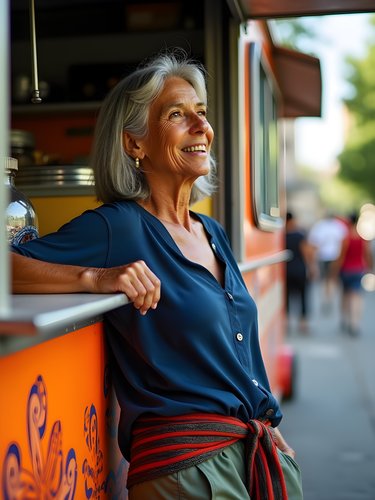


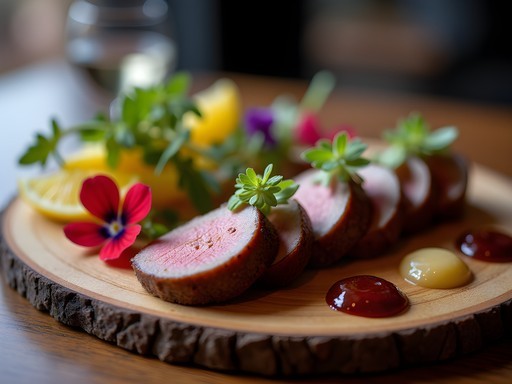
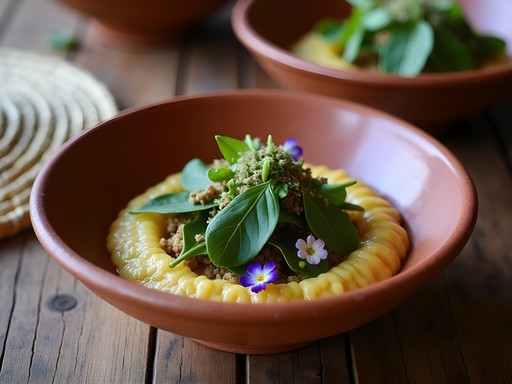
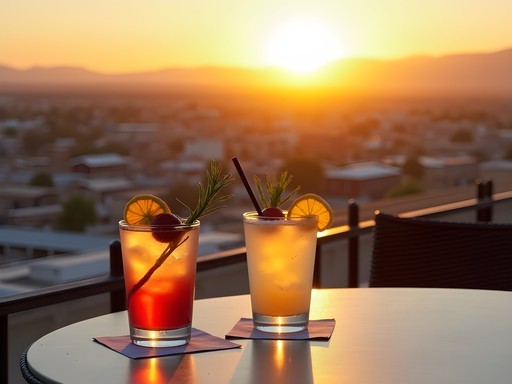






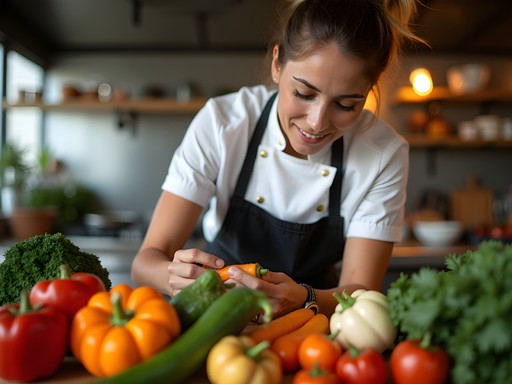

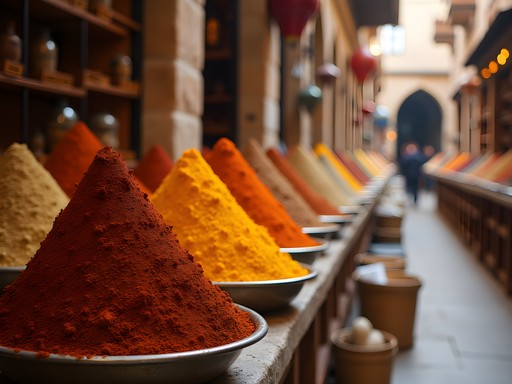
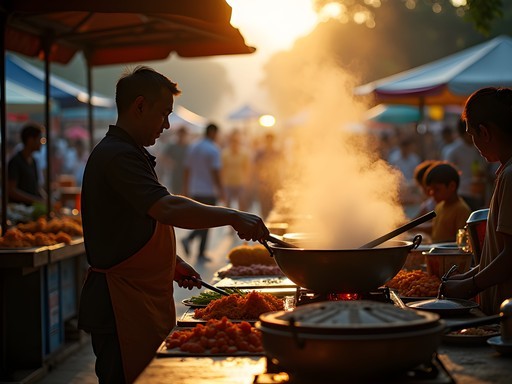
Comments
TravelWithSam
Just got back from Windhoek last week and this post captures it perfectly! We followed your advice about the markets on Independence Avenue and scored some amazing dried game biltong. The vendor even threw in some free mopane worms for us to try (honestly, not my favorite lol). We found this tiny German bakery called Anton's that wasn't in any guidebooks - the black forest cake there was incredible. For anyone heading there, don't miss the Sunday brunch at Hotel Heinitzburg - pricey but the views over the city while eating kudu carpaccio are worth every penny!
nomadadventurer
Adding Hotel Heinitzburg to my list! Did you need reservations for the Sunday brunch?
TravelWithSam
Yes, definitely make reservations! We booked 3 days ahead and got the last table. Worth planning for!
safari_foodie
Those German pastries with African coffee is the combo I still dream about!
nomadadventurer
Going to Windhoek next month! Any recommendations for vegetarian options there? The game meat focus has me a bit worried...
Douglas Bradley
@nomadadventurer Don't worry! Check out The Craft Café that Nicole mentioned - they have amazing vegetarian options. Also try Elago Restaurant for traditional veg sides like oshifima (millet porridge) and wild spinach dishes. The markets have incredible fresh produce too!
nomadadventurer
Thanks so much! That's really helpful. I'll definitely check out those places.
photowanderer
Also try the marula nut dishes! I'm not vegetarian but those were amazing. And bring a good travel water bottle because the tap water is safe but the city can get really hot.
photowanderer
Your market photos are stunning! Makes me want to book a flight right now.
Douglas Bradley
Nicole, your framing of Windhoek as a culinary crossroads is spot on! I spent three weeks there last year documenting the fascinating German-African fusion cuisine. The colonial bakeries alongside traditional markets create this incredible tension in the food scene that tells Namibia's complex history on a plate. I found Joe's Beerhouse to be a bit touristy but still worth visiting for first-timers wanting to try game meat. Did you manage to visit any of the township braai spots? That's where I found the most authentic grilled meats and pap combinations. The resurrection bush tea you mentioned has become a staple in my pantry since returning - that subtle earthy flavor is impossible to find elsewhere!
photowanderer
Joe's Beerhouse was definitely touristy but I loved the zebra steak! Worth it just for the experience.
Douglas Bradley
@photowanderer Their zebra is well-prepared, I'll give them that! Did you try the oryx too?
photowanderer
Yes! Oryx was actually my favorite. So lean but flavorful!
travelmaster
Your photos of the market are stunning! I'm curious about the German influence on the food. I knew Namibia was a German colony but didn't realize how strong the culinary connection still is. Those pastries look incredible. I'm planning a trip for next year and I'm wondering if I should pack my pocket phrasebook or if English is widely spoken in restaurants?
Nicole Henderson
Thank you! The German influence is definitely still strong, especially in the baked goods. English is widely spoken in Windhoek restaurants, especially in the touristy areas, so you should be fine without German phrases. That said, learning a few basic Namibian greetings in languages like Oshiwambo or Afrikaans is always appreciated by locals!
travelmaster
Great to know! I'll focus on learning some local greetings instead.
Frank Garcia
Brilliant write-up on Windhoek's food scene! I spent three weeks backpacking through Namibia last year, and the culinary contrast between German precision and African flavors was fascinating. The bakeries were a highlight - I'd wake up early just to get those fresh brötchen. One thing I'd add is that the craft beer scene is also developing nicely. Camelthorn Brewing Company makes some excellent beers that pair perfectly with game meats. Did you get a chance to try any of the bush teas besides resurrection bush? I became slightly obsessed with devil's claw tea during my stay - great for muscle recovery after hiking in the dunes!
Nicole Henderson
Thanks Frank! Yes, I tried devil's claw tea too - amazing stuff! I actually brought some home with me. And you're right about the craft beer scene - should have mentioned that. Camelthorn's Weizen was my favorite.
summerninja
Those game meats sound interesting but I'm a bit nervous to try them. Are they very gamey tasting? Which one would you recommend for someone new to game meats?
Frank Garcia
Not Nicole, but I tried game meats in Windhoek last year. Springbok is a great starter - it's similar to venison but milder. Oryx is also excellent and less gamey than you might expect. Most restaurants cook them really well to minimize any strong flavors. The kudu can be a bit more intense if you're not used to game meats.
summerninja
Thanks Frank! That's really helpful. I'll start with springbok then!
cityexplorer
Great post! I'm heading to Windhoek next month. What's the one dish you'd say is an absolute must-try for a first-timer?
Nicole Henderson
Thanks for reading! I'd definitely recommend trying oryx steak - it's lean, flavorful, and uniquely Namibian. Joe's Beerhouse serves an excellent version. Also, don't miss trying kapana (grilled meat) from the Katutura market for a more local experience!
cityexplorer
Awesome, thanks for the tips! I'll definitely check out both places.
vacationmaster
Love your photos of the markets! Those colors are amazing. We're planning our first Africa trip next year and Namibia just made the list. Did you feel safe exploring the food markets on your own? Any tips for vegetarians?
Nicole Henderson
Thanks! The markets are generally safe during daytime, just use normal travel precautions. For vegetarians, look for mahangu porridge, bean dishes, and the amazing local mushrooms when in season. Craft Café that I mentioned has some great vegetarian options too!
Venture X
Premium card with 2X miles, $300 travel credit, Priority Pass